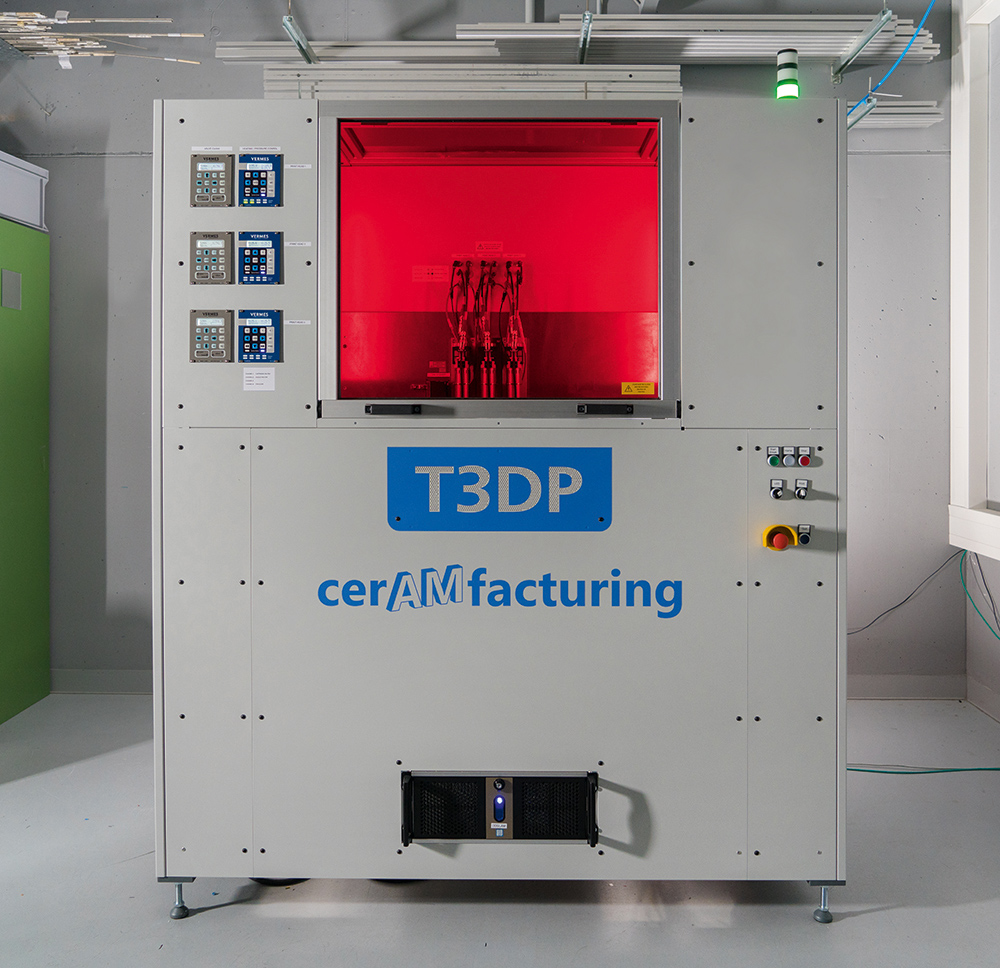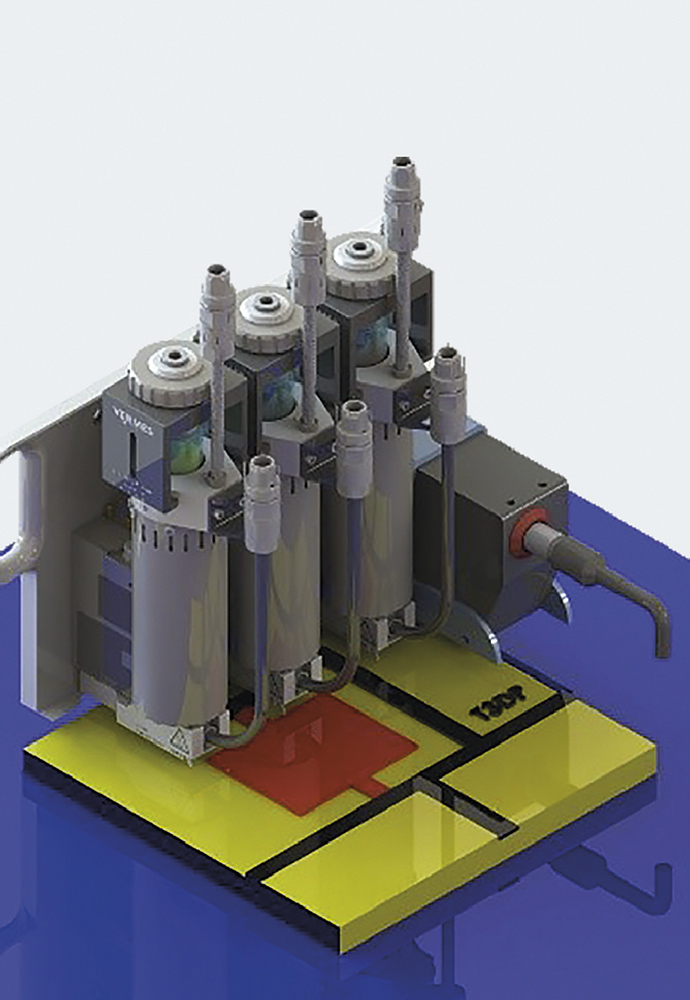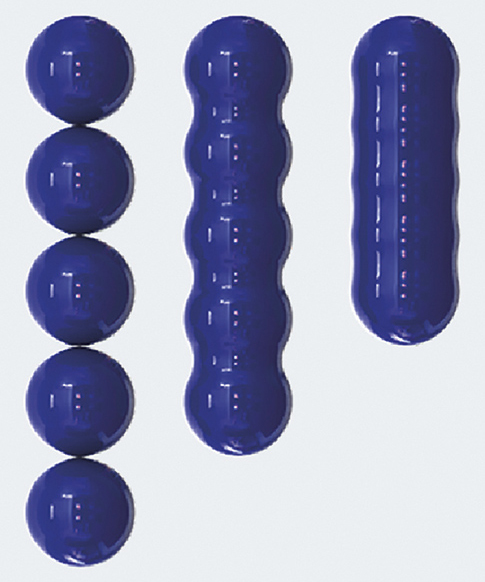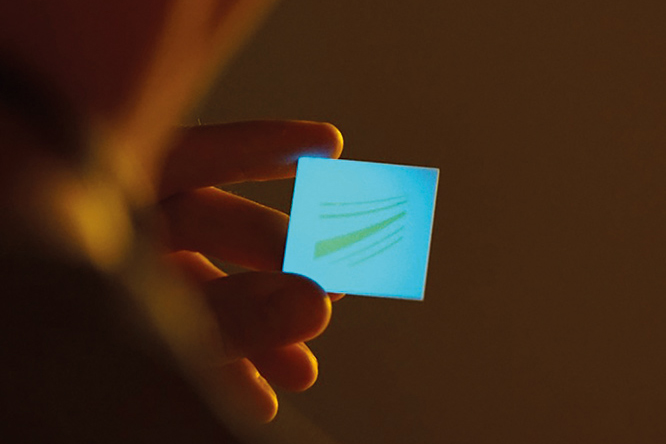


Components that are, for instance, thermally or electrically equally insulating and conductive or multicolored place high demands on production. The additive manufacturing technology of Multimaterial Jetting MMJ holds a great deal of potential when it comes to such multi material parts.
Technology
MMJ is based on a unique technology and plant development of IKTS, which overcomes the limits of conventional methods. The technology is based on the drop-by-drop deposition of particle-filled thermoplastic feedstocks. Defined overlapping of single droplets enables producing dense green components. A special feature is the solidification mechanism based on cooling. This is virtually independent of the physical properties of the materials used. It allows metals, hardmetals as well as oxide, nitride and carbide ceramic materials to be processed. The shaping is followed by debinding and sintering. The use of high-precision microdispensing systems (MDS) allows droplet volumes to be generated on a nanoliter scale. Depending on the dynamic viscosity of the used feedstock, the parameterization of the dosing cycle allows to realize droplet diameters between 300 and 1000 µm and layer heights between 100 and 200 µm.
Plant development
The MMJ plant developed at Fraunhofer IKTS has a 200 x 200 x 180 mm3 building platform that moves in x, y and z directions under up to four implemented MDS and a profile sensor. The maximum velocity of the building platform is 60 mm/s. The system is equipped with the latest hardware components, boasting a positioning accuracy of ≤ 20 µm and a repeatability of ≤ 5 µm. After successful validation, the technology is to be commercialized based on this device.
Multifunctional components
Since up to four different feedstocks can be used, it is possible to realize material or property gradients, generating graded physical (mechanical, electrical, optical, thermal) and chemical properties.
Dosable materials
Al2O3, ZrO2, TiO2, Si3N4, AlN, WC, WC-Co (6–12 % Co), 17-4PH, 316L, sinter glasses, LTCC and functional materials
Services offered
- Feedstock and component development, as well as technology transfer
- Development of hard- and software for process monitoring and automation
